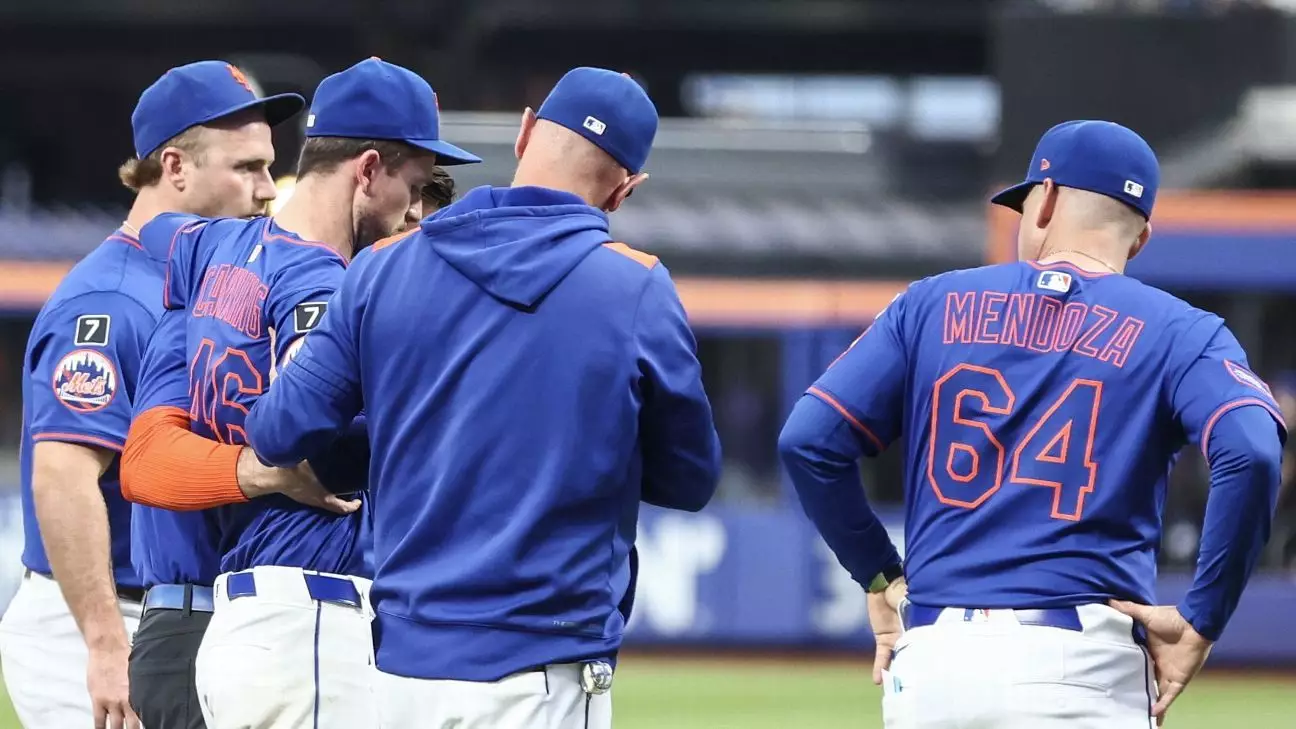The New York Mets’ bullpen woes deepened dramatically with the troubling injury to right-hander Griffin Canning during their recent matchup against the Atlanta Braves. On the surface, a non-contact Achilles injury might seem like an unfortunate but isolated incident. However, within the broader context of a pitching staff already marred by multiple setbacks, this latest misfortune threatens to unravel a rotation that is pivotal for the Mets’ ambitions this season. Canning’s injury is not only significant due to his immediate absence but also because of the cascading challenges it imposes on the team’s roster management and competitive prospects.
Griffin Canning had become a cornerstone for the Mets after a solid start to the season, demonstrating promising form with a 7-3 record and a respectable 3.77 ERA—numbers that starkly contrast with his prior struggles during his time with the Los Angeles Angels. His unexpected injury, sustained while responding to an infield grounder, forced an abrupt departure from the game, marking a moment that left teammates, coaches, and fans visibly rattled. The image of Canning, wincing and unable to stand unaided, underscores the severity and suddenness of the situation.
A Cascade of Injuries Undermining the Rotation
What amplifies concern for New York is that Canning is the third starting pitcher from their Opening Day rotation to be sidelined within a two-week span. Earlier, ace Kodai Senga suffered a right hamstring strain, following a catch during a defensive play; Tylor Megill has been out since mid-June due to a troubling elbow sprain. To compound an already grim narrative, left-hander Sean Manaea’s attempted comeback was thwarted when a bone chip in his elbow was discovered during minor league rehab, hinting at prolonged recovery timelines or potential setbacks.
This frequency and clustering of injuries expose an unsettling fragility in the Mets’ pitching staff, forcing the coaching staff to repeatedly scramble for solutions. While the organization remains hopeful for certain players’ returns—such as Manaea’s anticipated rehab the following week—the uncertainty hangs heavily over the team’s competitive outlook. The role of rugby toughness gives way here to the grueling toll that injuries impose on professional athletes, spotlighting an area where depth and strategic planning are paramount.
Finding Resilience in Adversity
Despite this adversity, the Mets have shown glimpses of resilience. Right-hander Austin Warren’s relief appearance in the wake of Canning’s injury was a silver lining—he managed to retire the dangerous Ronald Acuña Jr. and threw 2⅓ innings with minimal damage, earning the win. Similarly, Frankie Montas’ return from a lat injury and strong five-inning performance suggests that the Mets’ rotation may yet stabilize, albeit through patchwork solutions and mid-season adjustments.
This situation prompts a wider discussion about the management of pitching staffs in modern baseball, where high workloads and minor lapses in conditioning can have outsized impacts. The Mets’ management faces crucial questions about how to balance protecting key players while still maintaining a competitive edge. The reliance on younger or less experienced pitchers as replacements underscores the potential risks and rewards—the team’s success may hinge on whether these players can step up under pressure or if the rotation’s fragility will become a chronic hinderance.
Strategic Imperatives and Long-Term Vision
The Mets’ predicament raises larger philosophical questions about team-building strategies in a sport increasingly driven by analytics, injury prevention methods, and roster flexibility. Investing in depth pitchers and managing innings more proactively might help prevent such scenarios, but it demands both foresight and organizational commitment. There’s also the emotional toll to consider—players like Canning who were gaining momentum and confidence now face arduous recoveries, and their absence affects team morale.
Beyond the statistics and rehabilitation timetables, the Mets’ leadership must navigate a delicate balance between short-term competitiveness and the preservation of assets for future seasons. The caliber of their top-tier talent means there is expectation and pressure, but the operational realities of a grueling MLB season suggest resilience will be tested repeatedly. Their ability to absorb this injury blow and maintain a path toward contention will reveal much about the character and adaptability of this Mets roster.
Ultimately, while injuries are an inevitable part of professional sports, the Mets’ situation is a vivid reminder that even teams with talent and resources can be brought to a crossroads through unforeseen misfortune. How they respond—both tactically and psychologically—may define their trajectory this summer and beyond.


Leave a Reply